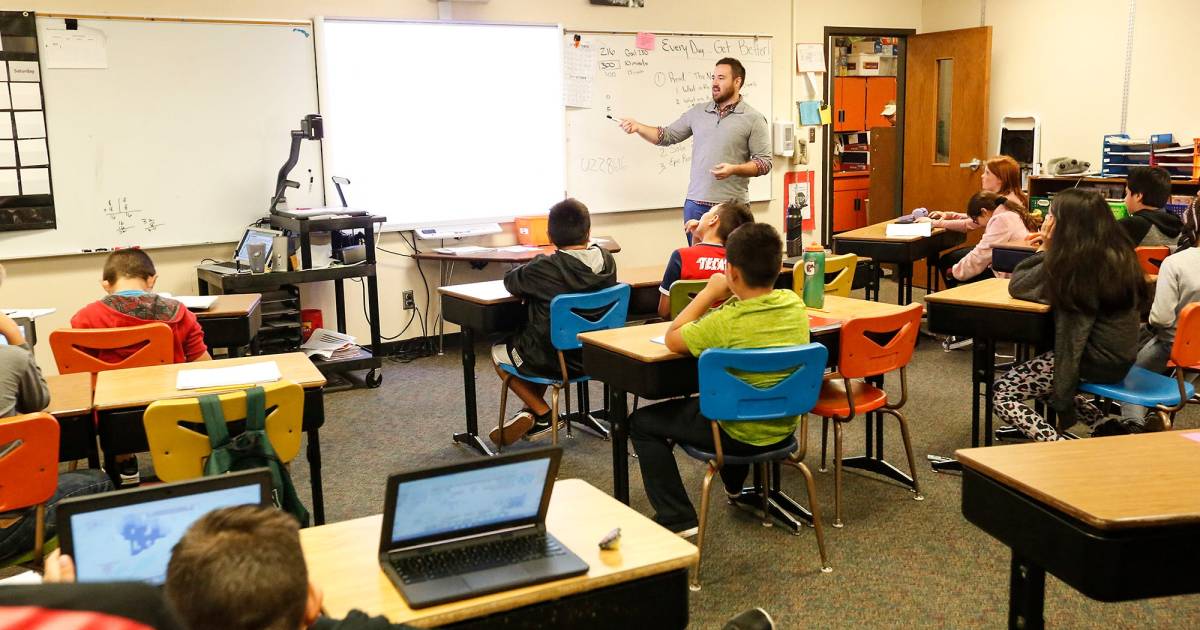It is an effort to make education more accessible to the students living in these areas. The government is trying to create an environment where students can learn without having to leave their homes and go to school. The government has also introduced many programs that help students learn at their own pace and help them get better results.
As per Research conducted by School in Dehradun, The digital learning program is also helping teachers who are working in rural areas so that they do not have to travel long distances just to reach their schools. That makes it easier for them because they can stay at home and teach their students online from there.
The government recently launched the M SHRI project, which will modernise and green the infrastructure at 14,500 more than one million government schools. That is a start in the right direction that will undoubtedly increase teacher and student motivation and assist the learning gap in India.
Over 25% of students in Standard VIII are unable to read a text that is in Standard II,
while only 28% of students in Standard III can execute at least subtraction, according to the Annual Status of Education Report (Rural) 2018.
Also Read : Digital Learning : The Revolutionary And Futuristic Solution For Education
Digital Learning In India

Digital learning in India is a huge boon for students, teachers, and parents.
For students, it can be a way to avoid the enormous cost of private tutors and cram schools. It’s also a way for students to take advantage of the flexibility of digital learning—many students aren’t able to attend school full-time due to family or work commitments, but still want an education that will help them succeed. Digital learning allows them to do this at their own pace and on their own time.
For teachers and parents, digital learning means they can have more say in what their children learn, instead of relying on an outside provider who may not share their values. They can also feel confident that their children are getting the best possible education when they’re using technology that’s been developed by experts in the field.
Digital Learning brings together experts from across the globe to share their knowledge with others who want to learn about digital education. It’s a platform for sharing ideas and information about how we can create better systems of teaching and learning for our children—and for ourselves as adults as well.
The goal is to help everyone get involved with digital learning in whatever way makes sense for them, whether that means creating an online course or just sharing tips on how best to use your phone or tablet while studying at home (or at work).
Focus Reiterated On Education

With the renewed focus on education in India, it is easier to make quality education more accessible and high-quality. The government is using disruptive technologies to make the process more thorough, fair, and high-quality by placing large-scale projects in Tier II, III, and IV cities. That involves multiple plans and public-private partnerships.
The National Education Policy (NEP) 20 is set to be implemented in India. The goal of this policy is to provide quality education to all children in India so that they can grow up to become productive members of society.
The NEP 20 aims to create an education system that provides equal opportunities for students from different backgrounds and communities, as well as make it easier for students from rural areas to access high-quality education by increasing the number of schools and colleges available to them.
It also aims to ensure that teachers receive better training so that they can provide better lessons and support students’ learning needs better; as well as make sure that there are enough resources available for all students so that they can learn without any barriers or distractions.
Another significant aspect of NEP 20 is improving teacher-student relationships by ensuring there is mutual respect between both parties at all times during their interactions with each other; which will help encourage more positive behaviour among teachers themselves who are more likely to care about their work if they respect their students first!
The success of these initiatives will influence how quickly the learning disparity is closed. Technology is helpful in this situation because it makes it possible to scale up operations, meets teaching-learning goals, and provide access to engaging study material across media.
How To Achieve Digital Learning?

To create a top-notch educational ecosystem, you first have to understand what an educational ecosystem is. An educational ecosystem is made up of five different components: teachers, students, institutions, parents and the government. A strong educational ecosystem requires all components to be functioning well together.
-
Handling The Digital Divide
We can do this by providing students with access to technology and training on how to use it. This is necessary because many students will be unable to afford computers or tablets, but will have access through schools or libraries.
Second, we should focus on teacher training so that teachers know how best to use technology in their classrooms and how it can help them improve their teaching methods. Third, we should give parents education about how effectively technology can be used as an educational tool for their children.
-
Addressing The Engagement Issue
There are many reasons why students are not engaged in their education, but one of the biggest is that they do not see the value of learning. This is especially true for rural students who may have never been exposed to the opportunities that come with a good education. They may not know about how it can help them get better jobs or make more money, or how it can help them learn new skills that will be useful throughout their lives.
Being able to visualise the process of photosynthesis or life in the Indus Valley requires imagination, focus, and concentration. Instead, multimodal content such as movies, simulated experiments, animations, games, etc. may make learning exciting and understandable.
To mix self-learning with guided learning and give students back control over their education, teachers can save time with the help of this collection of readily available information and jointly developed technologies.
It’s necessary to start by educating parents and teachers on why they should care about student engagement, and what they can do to improve it. Encouraging them to take an active role in helping students succeed will go a long way toward improving engagement levels within your school system.
-
Improving 21st-Century Skills
Creating a top-notch educational ecosystem in rural India requires a five-step strategy: fostering 21st-century abilities, creating an inclusive environment, facilitating access to technology, promoting equity and gender equality, and developing creativity.
Some tips to do the former:
- Create an environment where students are inspired and motivated to learn.
- Allow students to explore their interests, talents and passions.
- Help students develop 21st-century skills through experiential learning activities.
- Build a support system that helps students stay on track with their goals, including help with financial aid and scholarships.
- Provide students with access to technology that will help them succeed in college and life after graduation.
Cultivating 21st-century skills like critical thinking, communication, cooperation, and creativity through controlled exposure will go a long way toward creating tomorrow’s leaders.
-
Revolution
The digital revolution is the most important step to be taken in rural India. The main purpose of this revolution is to make the educational ecosystem in rural India more accessible, affordable and effective. That would help students to develop their skills and become eligible for better jobs. The digital revolution can be achieved by:
Digital education will increase the rate at which students learn in comparison to traditional learning methods. It will also reduce the amount of time spent on learning because of its interactive nature and flexible scheduling options. The use of technology in the classroom can enhance student engagement, improve retention rates and allow for more personalized instruction.
Digital content has a very important role to play in the development of rural India because it helps to overcome geographical barriers when it comes to accessing quality educational resources online at a low cost or free of charge.
This means that access is not limited by location or finances which means students can now study from anywhere they want without having trouble with transportation costs or distances involved with travelling between classes every day!
Education professionals cannot ignore the digital revolution. As the decision-makers in the educational system, they require the proper training in digital teaching techniques.
to create a fully functional and long-lasting ecosystem that enhances education’s efficacy and efficiency and moves away from the notion of the teacher as a transmitter of knowledge and toward the notion of teaching and learning as a transformation.
-
Creating A Learning Setting
If you want to create a top-notch educational ecosystem in rural India, you need to adopt a five-step strategy:
First, you need to create a learning environment that nurtures curiosity and imagination. A good place for this is the classroom. The classroom should have plenty of natural light, comfortable seating and desks, and a variety of engaging activities that encourage students to pursue their interests.
Second, teachers must be able to create an atmosphere where students feel safe enough to express themselves. This means that they need to learn how to manage their emotions while also remaining calm and focused on the task at hand.
Third, schools should offer opportunities for students who excel above their peers so they can learn from those around them as well as exceed expectations themselves. This will help them develop confidence in their abilities while also providing support during difficult times when needed most.
Fourth, schools should provide opportunities for all students regardless of their background or circumstances, such as financial status or disability status so everyone has equal access (such as transportation costs) which will allow everyone an equal chance at success both inside and outside of school environments!
Conclusion
In rural India, many students are unable to attend school because they have to work on farms or in factories to make money for their families. To solve this problem, there must be institutions that provide education without charge so that these children can receive an education without having to work during the day.
This will allow them more time for studying and less time working during their school hours so they can focus more intensely on their studies when they do attend class!
For any queries related to parenting, schooling, or any student-related tips, click here to check out our latest blogs









